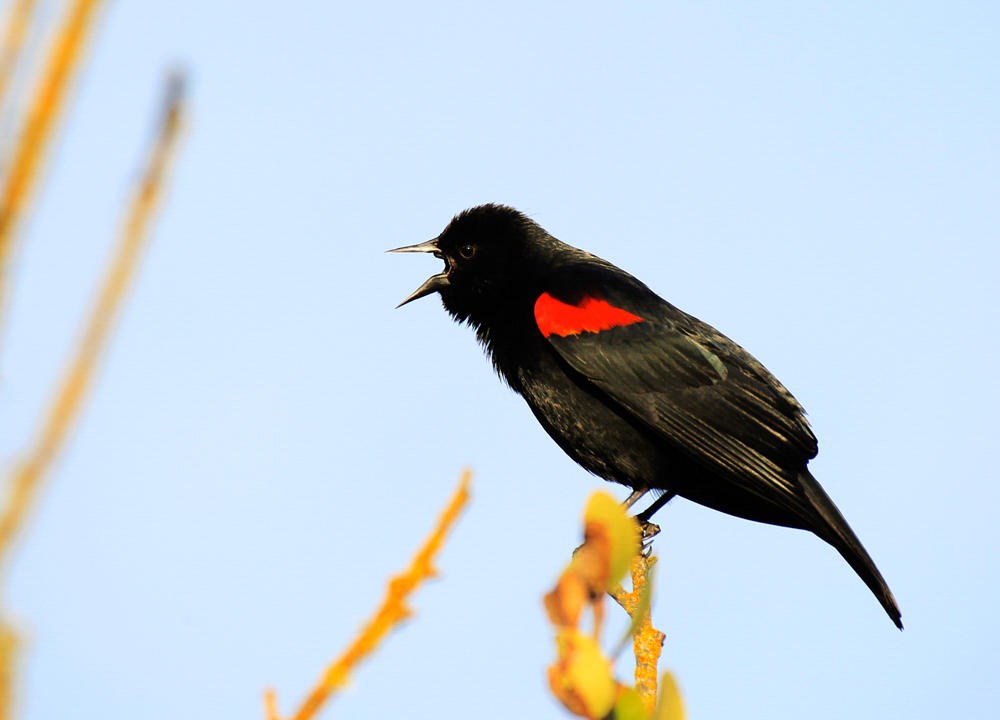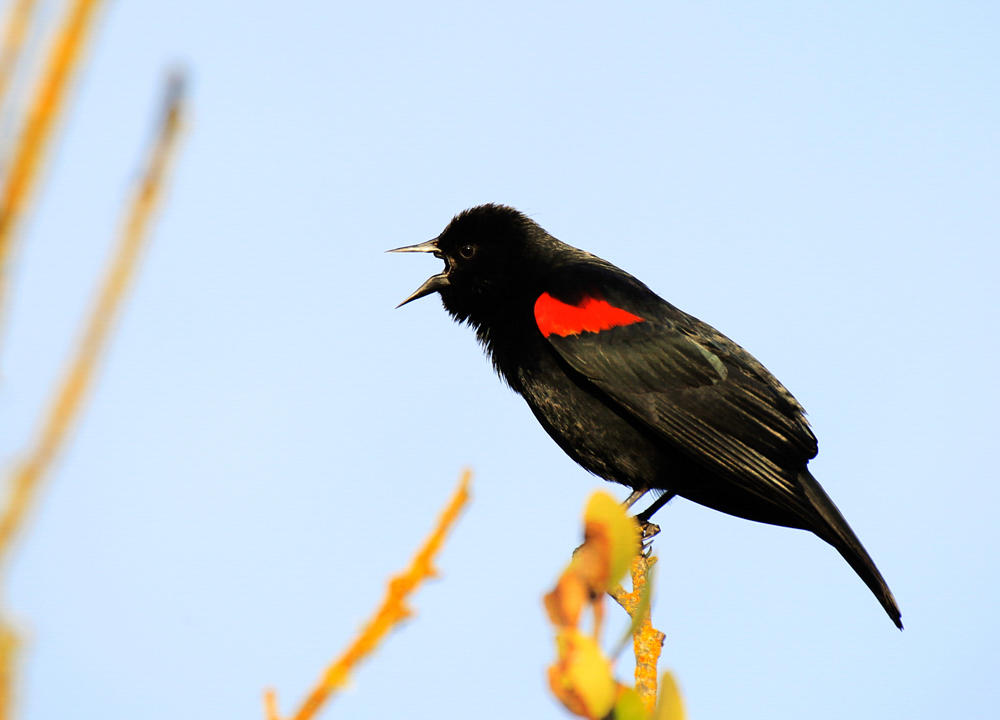You don’t even need to step outside for the birds to let you know that springtime is upon us. Now is a great time to become familiar with the songs of the birds who are all around us (and making a lot more noise).
Migratory birds are just starting to arrive back in Vermont for the breeding season, so the next few weeks will be a good time to notice the songs of the newcomers before the full chorus of spring birdsongs are upon us. Even the birds who have been here all winter long are making themselves heard more loudly right now as they establish boundaries for nesting territories and find their mates.
Now might be a good time to download the FREE Audubon Bird Guide App: https://www.audubon.org/app
I’ll also include links to the online version of the Audubon Bird Guide for each of the birds we learn: https://www.audubon.org/bird-guide and give links for the songs.
Let’s start with a few birds who you already know:
The American Crow. Classic. Insistent. So much fun to practice perfecting that gravely squawk. Go ahead, give it a listen and sing along.
The Black-capped Chickadee. You know the song. She says her own name: “chicka-dee-dee-dee” You hear it all winter long. It’s her alarm call. Other birds know that alarm and pay attention when they hear it. Soon the chickadees will also start singing their mating call: “hey sweetie”. It’s clear and high and oh-so-sweet. Give them both a try.
The Blue Jay. These birds also call out their own name: “Jay! Jay! Jay!” in a rather harsh, pushy way. I’ve been noticing groups of Blue Jays all around my neighborhood lately. The flash of brilliant blue/black/white is hard to miss.
The Canada Goose. They’re back! You’ll notice them arriving in pairs. They mate for life and prefer to nest in the same location year after year. Nothing quite like that distinctive HONK.
Let’s try some birds that I’m sure you’ve been hearing:
The Mourning Dove. You might have mistaken their gentle coo-ing for an owl call. Their 5-note song is rich and melodious. You’ll almost always see Mourning Doves in mated pairs.
The American Robin. These birds are all around, singing clear and strong, but they can be confusing. There’s the classic “Cheerio. Cheery-me. Cheerio. Cheery-me.” song, but they also make sooooo many other sounds: whinny calls, whisper songs, and hawk alarm calls.
The Northern Cardinal. Another bird with a huge vocabulary, making them a trickier bird than you’d expect. The males are easy to spot with their bright red feathers, and they are often right out in the open when they’re singing. Take some time to watch and listen to their many songs. The end of their song sounds like a Star Wars light saber fight. I can hear one outside my window right now – so far I’ve noticed 5 different songs. Tricky bird.
The Pileated Woodpecker. I’ve been hearing this bird drumming in my neighborhood every morning this spring but I’ve only caught sight of it once. It’s a big, knocking ruckus. Every once in a while I also hear their chicken-like “cuk-cuk-cuk-cuk" song.
Get ready for these migratory birds to arrive (some of them are already here):
The Red-winged Blackbird. A classic sign-of-spring song. You’ll find the males establishing their nesting territories at ponds and wetlands right now. When the females arrive a few weeks later they’ll choose the mate with the best territory. “Conk-la-ree" is their mnemonic (“a device such as a pattern of letters, ideas, or associations that assists in remembering something”). Blackbirds also make a super-high-pitched alarm whistle. Listen for it as you get close to cattails.
The White-throated Sparrow. This bird’s song tells me that REAL spring is actually here (not fool’s spring or mud-season spring). It’s a high, sweet song with a bouncy melody: “Oh, sweet Canada, Canada, Canada, Canada”
The Eastern Phoebe. This bird sings its own name, in a raspy, quick two-note song. If you scrunch up your face when you sing along you’ll have more fun! “Phoe-beee!”
Turn bird song into a game!
-
Practice singing along to the bird songs,
-
Quiz each other on the recorded songs,
-
Match a picture of the bird to the song it sings,
-
Listen to the birds near you and try to figure out who’s singing before you see them!
A few tips:
-
Don’t try to learn all of the bird songs all it once.
-
Notice what you already know and build up gradually over time.
-
Be patient with yourself.
-
Have fun with the songs and sing along!
To wrap things up listen to a Bird Song Opera!
Looking for a deeper dive into bird song?
-
Audubon Vermont’s Bird Song Mnemonics Guide
-
Audubon Vermont’s Best Vermont Birdsongs
-
National Audubon Society’s 10 Common Bird Songs Made Less Confusing
-
National Audubon Society’s 8-part Birding by Ear Series by Kenn Kauffman
-
National Audubon Society’s Get to Know These 15 Common Birds


















